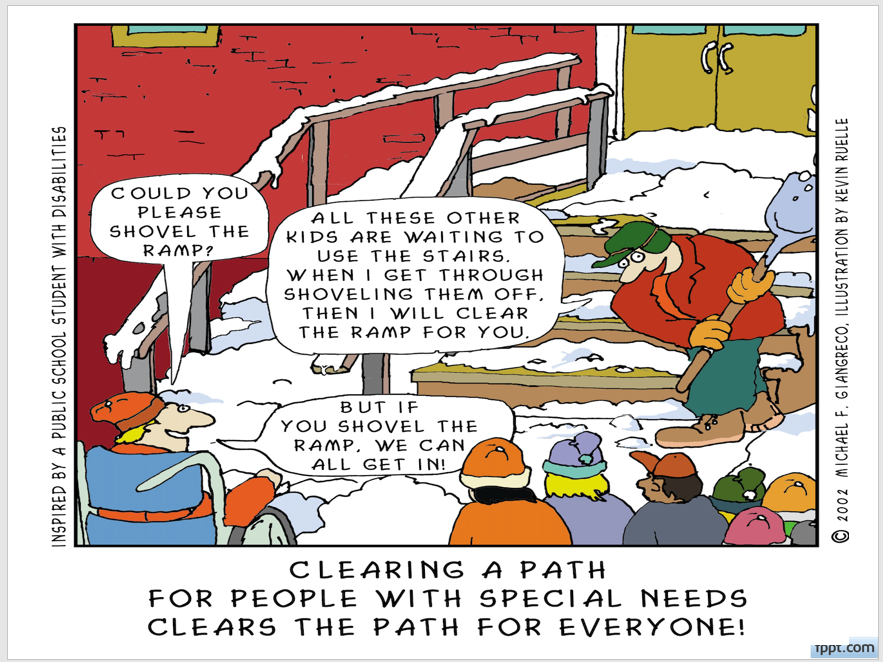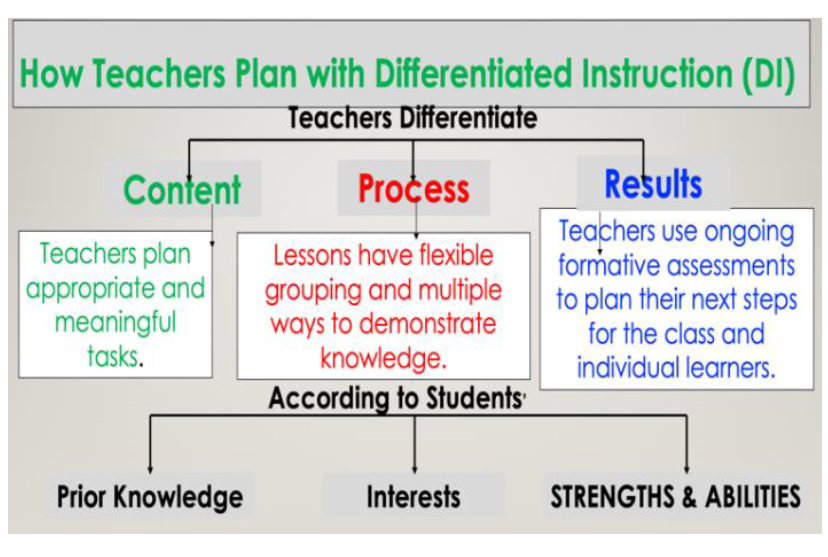Inclusion
| Sitio: | Colorado Education Learning Management System |
| Curso: | 2e (Open Access) Supporting Twice Exceptional Learners |
| Libro: | Inclusion |
| Impreso por: | Invitado |
| Fecha: | lunes, 15 de diciembre de 2025, 02:19 |
1. Inclusive practices for 2e students

Individuals with Disabilities Education Act (IDEA) does not use the word inclusion, but it does require school districts to place students in the least restrictive environment (LRE). LRE means that, to the maximum extent appropriate, districts must educate students with disabilities alongside their nondisabled peers and still provide appropriate aids and supports. To emphasize the point, the regular classroom is the first choice for all special education students unless the placement team creates an individualized education program (IEP) requiring some other arrangement. Any alternative placement, however, must maximize opportunities for the student to interact with nondisabled peers--to the extent appropriate for that student.
Inclusion can be full or partial. Full inclusion means students receive all educational services within the general education classroom, including their special education and related services. Partial inclusion means students are removed from general education only when it is necessary so that they can receive needed special education services. For 2e students, that may be specialized reading instruction for a student with dyslexia or social skills instruction for a student with ASD.
While 2e students are less likely to be excluded from the general classroom than other students with disabilities--unless they are diagnosed with a Serious Emotional Disability (SED) or another behavioral condition--it is important for educators to understand that federal law requires the "least restrictive environment."
Benefits of Inclusion
Students with disabilities, when included in the general classroom are (Laura K. Anderson, Courage to Risk 2021 from Hehir, et. al., 2016; Hymel & Katz, 2019):- less likely to receive behavioral referrals
- more likely to belong to a social group--more interaction with peers
- more likely to be employed after graduation
- more likely to live independently
When students are excluded, they have decreased academic achievement and are at higher risk for mental health concerns.
One strategy for assisting with meaningful inclusion of students with disabilities into the general classroom is to use "universal design for learning (UDL). “UDL provides a blueprint for creating instructional goals, methods, materials, and assessments that work for everyone–not a single, one-size-fits-all solution; but rather flexible approaches that can be customized and adjusted for individual needs” (Ceedar, National Center on Universal Design for Learning). UDL allows for lesson planning based on 3 principles involving multiple means of 1) representation, 2) action and expression, and 3) engagement.
For more information (optional or bookmark for later) see, UDL Guidelines.
An optional resource you may find useful for finding adapted literature and lessons is the Paul V. Sherlock Center.
2. Planning for Inclusion Success
Planning for student success in an inclusive classroom taps into what you already know about differentiation--planning for differences within content, process, and product. Teachers can use the same differentiation "map" when planning for gifted students, CLD students, 2e students, and non-gifted students with disabilities.Toby J. Karten (Courage to Risk, 2021), an expert on inclusion guides teachers in planning specially designed Instruction* for individual students and in using universal design principles and differentiating content, process, and results for students in an inclusive classroom. Her graphic below captures this planning process. Notice the emphasis on using students strengths and interests. This should be familiar to you from the Part 1 course. You will find many more resources on inclusion and differentiation from Toby Karten in our shared Google Folder.
*IDEA regulations define “specially designed instruction” as “adapting, as appropriate to the needs of an eligible child under this part, the content, methodology or delivery of instruction (i) to address the unique needs of the child that result from the child’s disability; and (ii) ensure access of the child to the general curriculum, so that the child can meet the educational standards within the jurisdiction of the public agency that apply to all children.” (34 CFR Sec. 300.39(b)(3)…. It is specific instruction that is delivered to the student, not differentiated instruction, accommodations, active learning strategies or other activities designed to facilitate learning for all students.
(Credit: UFT.org)
